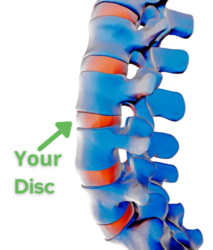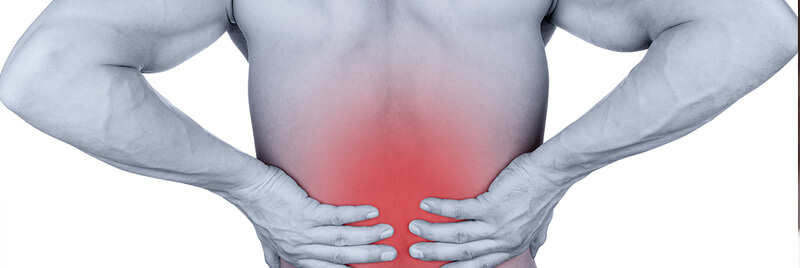
A herniated disc is a condition that can occur anywhere along the spine but is observed most often in the lower back. Herniated discs are one of the most common causes of low back pain. Many people use the term building disc to describe disc herniations, however, disc bulges are a less severe version of a herniation, as we discuss below.
While a herniated disc can be very painful, most people make significant improvements within 6-12 weeks, when they receive appropriate treatment.
Your lumbar spine is made up of five bones, called vertebrae, that are layered on top of one another and create a canal that encases your spinal cord.
Your spinal cord consists of nerves that run from your brain to your muscles. These nerves exit your lumbar spine and supply your lower limbs.
Your intervertebral discs sit between your vertebrae are flexible, flat and round. They act as shock absorbers between our vertebrae when we walk and run, preventing too much pressure from being transferred between each vertebra.

A disc begins to “bulge” when its jelly-like centre (nucleus) pushes against the outer barrier creating a small bulge in the disc. This is commonly the result of wear and tear or a sudden injury. This pressure against the barrier can cause low back pain.
Meanwhile, in a herniated disc, the center of the disc can place so much pressure on the outer barrier that a small tear occurs, and the centre begins to ooze out of the disc.
As the centre of your disc protrudes, it puts pressure on the spinal cord and nearby nerve roots. Further, there are chemicals within the disc that are released when it herniates that contribute to nerve inflammation.
Irritation of a nerve root, through chemical irritation or excessive pressure, can cause pain, numbness, and weakness in one or both of your legs, which most people know as “sciatica”.
Disc herniations are most commonly the result of age-related wear and tear on the spine. Due to the natural, daily stress, our spine is subject to, over time the discs can degenerate, weakening their structural integrity and making them more susceptible to bulges and herniations.
In younger individuals, discs have high water content. As we age, this reduces and the discs become thin and more rigid, reducing the space between the vertebrae and makes the discs more prone to herniation.
Traumatic events, such as falls, lifting excessive loads or car accidents can also cause disc bulges/herniations due to the increased pressure that is transferred through the spine.
Certain factors may increase your risk of a herniated disc. These include:
- Your gender (men aged between 20-50 are more at risk)
- Poor lifting techniques
- Completing repetitive activities for long periods (Eg. Sitting and lifting)
- Being overweight/obese
- Frequent driving
- Leading a sedentary lifestyle
- Smoking

Treatment of disc bulges/herniations depend on the location and severity of your condition, however some treatments your Physiotherapist may provide include:
1. Massage
2. Vertebral Mobilisations
3. Interferential Therapy
4. Stretching
Your Physiotherapist should also provide you with a structured exercise program that aims at alleviating your pain, increasing your lumbar mobility and improving the strength of your back and abdominal muscles.
To prevent bulging or herniated discs, we suggest everyone:
- Assess their daily tasks. Is there anything you are doing too often or improperly (eg. Do you sit for too long or lift loads poorly)?
- Maintain a healthy weight
- Walk as often as possible (Remember, sitting for too long can increase your chances of low back pain)